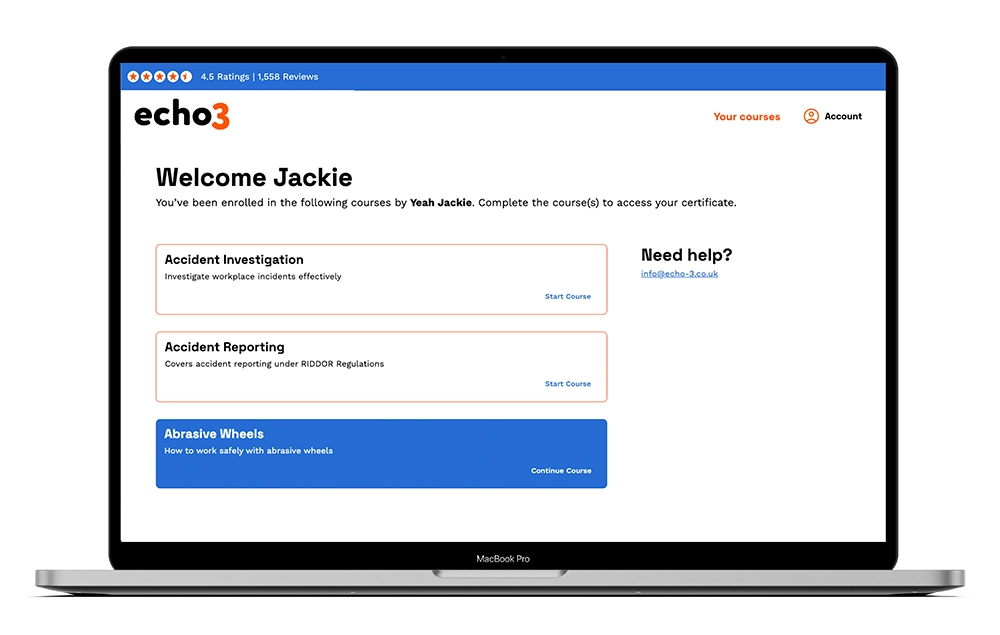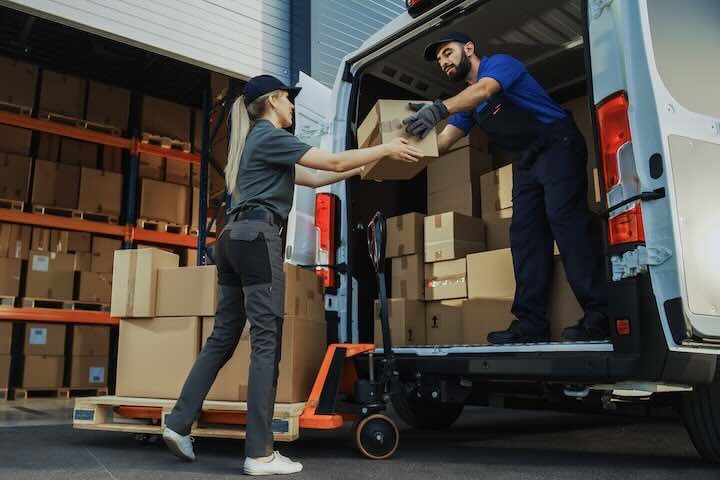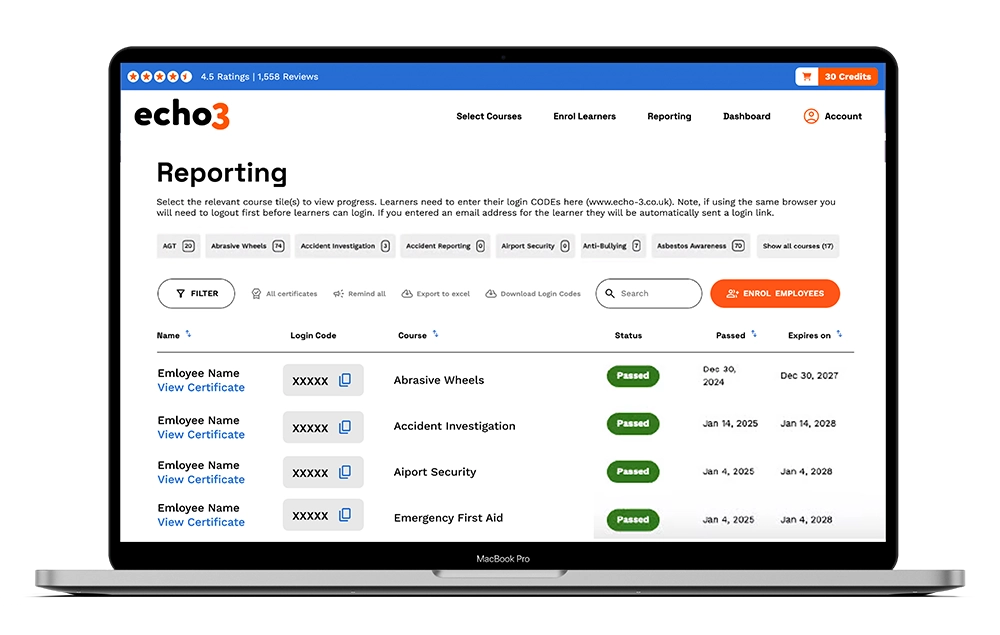Safe Loading of Vehicles Course
The Safe Loading of Vehicles course is designed for anyone involved in loading or transporting goods — including warehouse staff, van drivers, HGV operators, and flatbed truck drivers.
An estimated 62,000 items fall from vehicles onto the UK’s Strategic Road Network each year. These included everything from mattresses and sheds to ratchet straps and timber. Such unsecured loads pose a serious twofold risk: they can strike other road users when they fall, and they become dangerous obstructions that can lead to collisions.
Put simply, insecure loads cause injuries, fatalities, and costly delays.
Proper loading practices:
- Reduce the risk of road accidents
- Prevent damage to vehicles and goods
- Improve road safety
- Help businesses meet their legal obligations
Whether you’re handling pallets, scaffold tubes, or loose materials, this course provides the critical knowledge needed to load vehicles safely and responsibly.
Enrol yourself or your team to ensure everyone understands their responsibilities and how to keep people, goods, and roads safe. The Echo3 Safe Loading certificate is provided on successful completion.
Unit 1 | Safe Vehicle Loading
In this first unit, learners are introduced to the concept of a safe load and the responsibilities involved in keeping a load secure throughout the entire journey.
Unit 2 | Load Planning
The second unit focuses on load planning — what it involves, why it matters, and how to distribute weight evenly across axles to ensure vehicle stability and safety.
Unit 3 | Securing load safely
Unit 3 explores the different methods for securing a load effectively and highlights the risks of failing to do so. Topics include proper use of headboards, managing gaps with dunnage, when restraints are required, choosing effective restraints, and maintaining them to ensure ongoing safety.
Unit 4 | Overloading
Unit 4 covers the dangers of overloading and provides practical guidance on how to prevent it.
Unit 5 | General Safety Considerations
Unit 5 covers key safety considerations when loading, including manual handling techniques, the use of PPE, working at height, and safe unloading practices.
Unit 6 | Quiz
The course concludes with a 15-question multiple-choice quiz. A score of 80% or higher is required to receive your completion certificate. If needed, the quiz can be retaken at no extra cost.
- Written in compliance with the Road Vehicles Regulations 1986 and the Road Traffic Act 1988
- Developed by qualified health and safety professionals
- Accredited by CPD – learn more about CPD here
- Last Updated August 2025
- To gain the certificate you must complete the assessment which involves 10 questions.
- The online Safe Loading of Vehicles certificate is valid for 3 years.
Course Preview
Echo3 courses include engaging motion-graphic video content, with full english subtitles
Reviews
How to Get Certified in 3 Steps
Individual Learners


Benefits for Individuals
-
Engaging video-based content
-
Learner dashboard included
-
Instant access after payment
-
Free course retakes
-
Shareable digital certificate
 QR Code Certificate
QR Code Certificate




Bulk Buying Discounts
Courses related to Safe Loading
Communication Skills – How to communicate effectively at work
Defensive Driving – Know the mindset of safe drivers
LOLER – Understand the Lifting Operation and Lifting Equipment regulations
PUWER – Understand the Provision and Use of Work Equipment Regulations
Van Driver Safety – How to drive and operate a van safely
Vehicle Banksman – How to safely manage traffic flows on site
What are the course objectives?
The Safe Loading course is designed to ensure your staff understand how to protect themselves, their cargo, and other road users by loading vehicles safely, securely, and in full compliance with legal requirements.
To help key lessons stick, the course features concise, engaging video content that clearly explains essential concepts in an accessible format.
By the end of the course, participants will feel confident in:
- Identifying load-related risks
- Using appropriate restraints such as straps or nets
- Distributing weight evenly
- Preventing overloading
Whether loading scaffold tubes, pallets, or loose materials, this training provides critical knowledge for safe loading — helping to prevent accidents, reduce costly damage, and contribute to safer roads for all.
What is a safe load?
A safe load means it is evenly distributed & not too heavy for the vehicle. A safe load is one that stays secure throughout the journey. It must be restrained to prevent movement in all directions, especially during braking.
A load must be within the vehicle’s legal weight limits & evenly distributed across all axles. It also needs proper restraints like straps, nets, or containment bars to stop it moving in any direction.
Poor loading can damage goods, cause delays, or even result in cargo spilling onto the road. Safe loads reduce the chance of accidents, protect the vehicle, prevent damage to goods, & improve overall road safety.
Remember, a load that moves in transit, even slightly, can affect handling or break free. That’s why the law is clear: loads must be secure & the vehicle must be suitable for the job. That means planning properly, using the right restraints & checking weight limits before departure.











